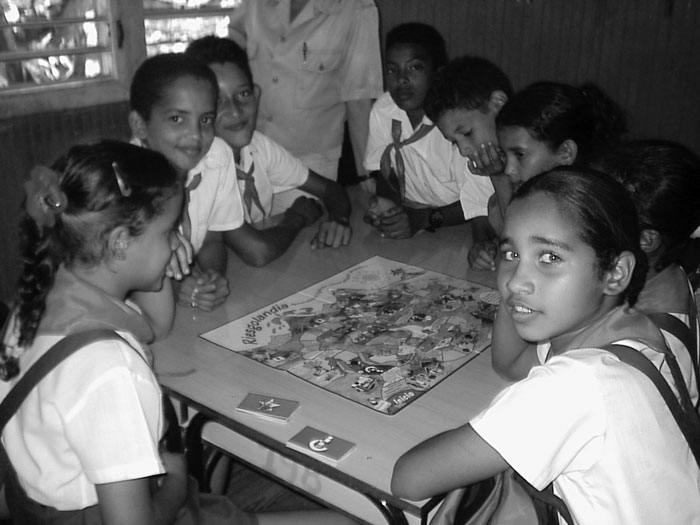

Latin America and the Caribbean
 |
 |
| International
Strategy for Disaster Reduction Latin America and the Caribbean |
Newsletter
ISDR Inform - Latin America and the Caribbean |
 |
|
Global
ISDR
|
Riskland throughout the world The education kit entitled “Riskland: the fun way to learn how to prevent disasters” is the outcome of a joint initiative between the International Strategy for Disaster Reduction (ISDR) and the United Nations Children’s Fund (UNICEF). This product was developed at the end of 2002 by the ISDR Regional Unit for Latin America and the Caribbean, in cooperation with UNICEF Regional Office for Latin America and the Caribbean (UNICEF-TACRO). Initially, it was addressed for countries in the LAC region and was originally produced in Spanish, English and Portuguese. The education kit was designed
for children between 8 and 12 years of age, and represents a complement
to any related material that schools
may already have. The kit includes a brochure entitled “Let’s
learn to prevent disasters,” which contains basic information on
natural hazards and risk reduction. It also includes the “Riskland” educational
board game, which deals with disaster prevention through a number of
educational messages that help understand good practices for reducing
the impact of disasters, as well as those actions that contribute to
an increased vulnerability to disasters. In July 2003, the first report on the education kit entitled “Assessment of the impact of Riskland” was published. As a result of the efforts of the ISDR Regional Unit for LAC, an updated version of this report is available on our website: www.eird.org.
|
 |
The interesting results of this report show that requests have been received from almost every single country in the Americas, as follows:
Riskland has also been successful outside Latin America and the Caribbean,
in countries such as India, Bangladesh, Angola and Nepal. A number of
organizations requested that the ISDR authorized them to reproduce the
education kit and adapt it to their own needs. For instance, in Nepal,
the National Society for Earthquake Technology (NSET), adapted it and
will distribute Riskland in 5,000 different schools. |
 |
As a result of a broad-based distribution campaign, Riskland has been translated into a number of languages. To date, a version of the kit is available in Spanish, English, Portuguese, Mayan Kaquichel, Kichwa, Papiamento, Creole, Nepalese and Bengali, and will be available in other languages in the near future. The overall assessment of Riskland has been very positive:
For additional information, please contact: |
| © UN/ISDR |